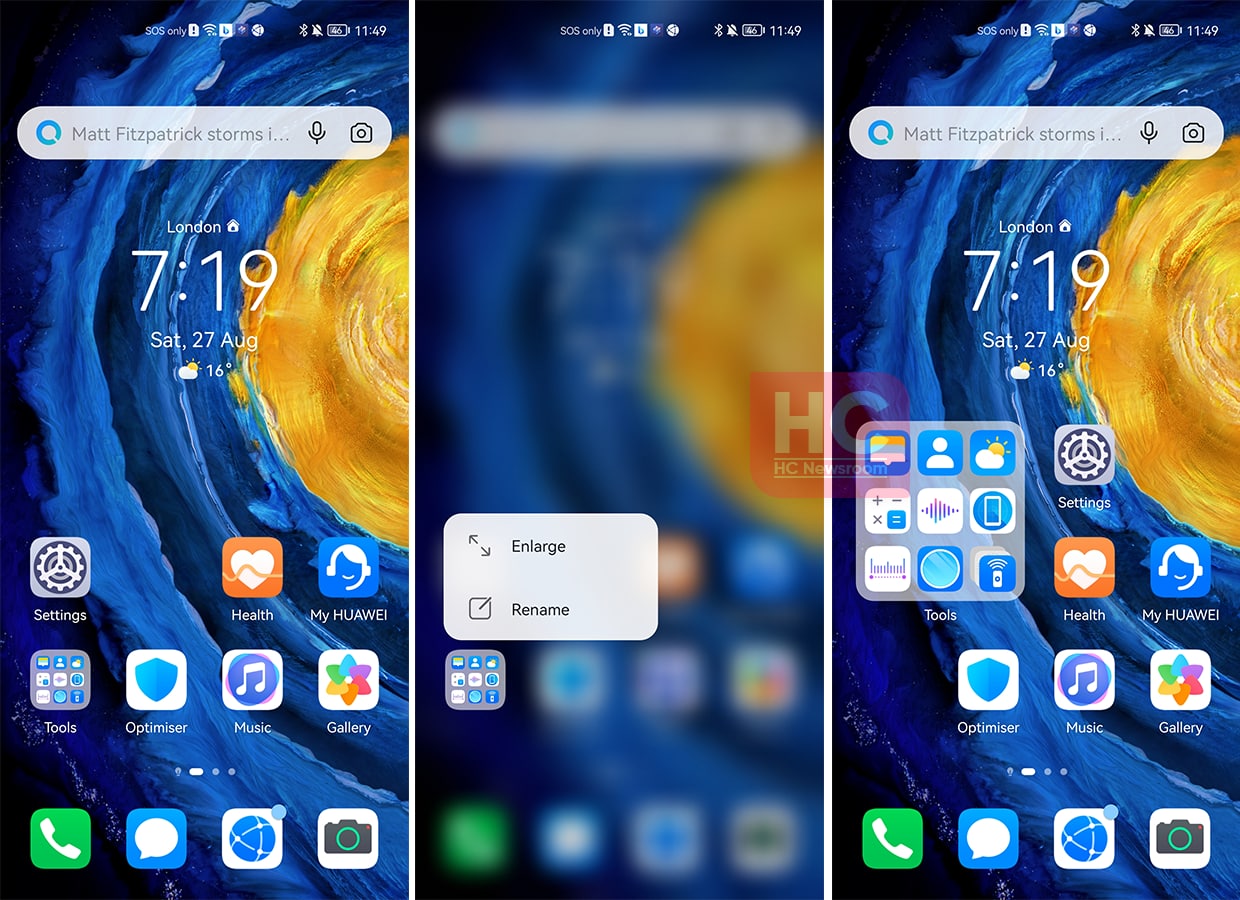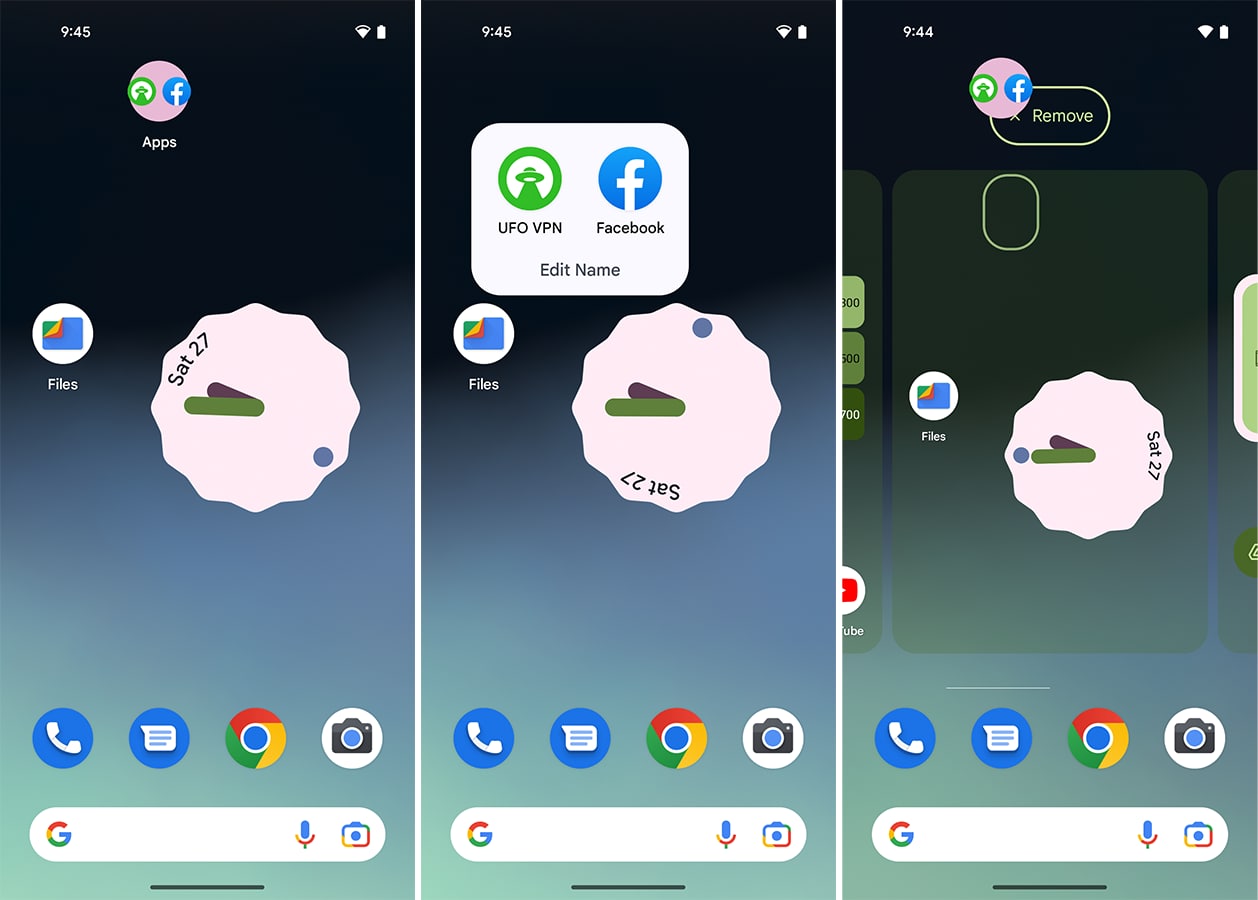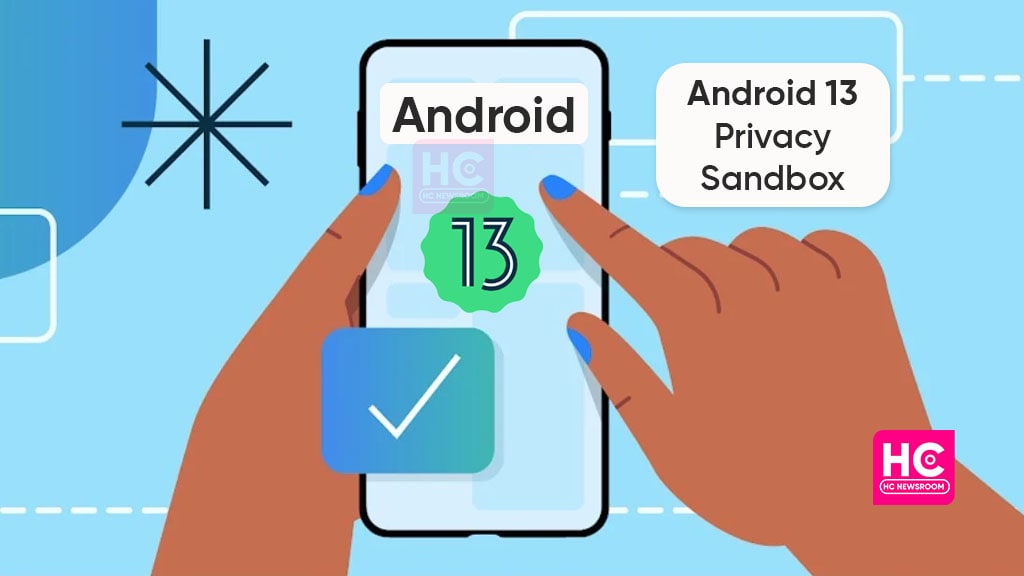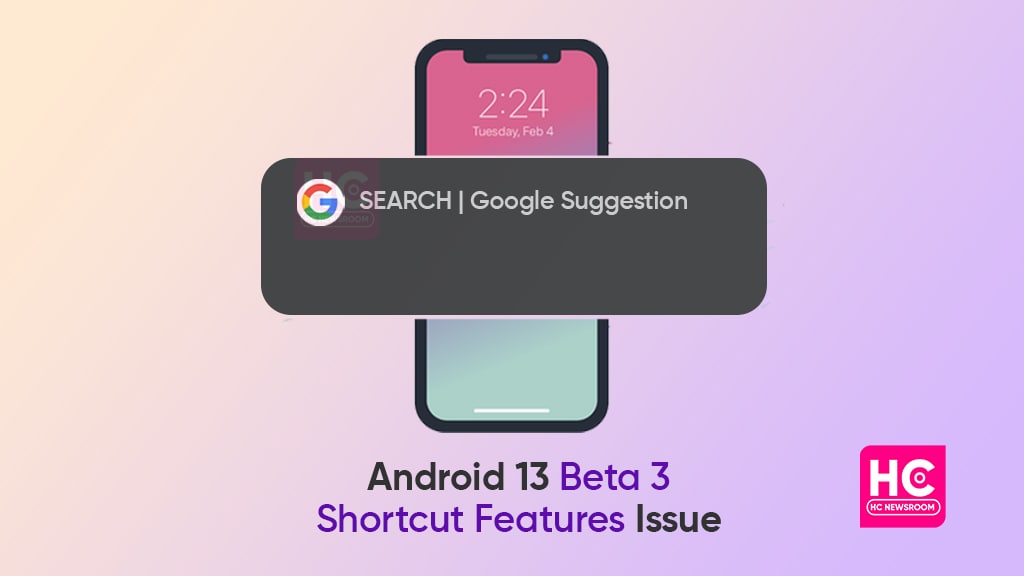Huawei MatePad Pro 12.6 November 2022 update rolling out in Europe
Huawei Sound Joy smart speaker improves system stability with new update
Broadcom BK7235 processor combines with OpenHarmony
Huawei MatePad Pro 10.8 gets SuperHub feature with HarmonyOS 3 public beta
Huawei MatePad Paper new update brings unique changes to Notes app
Huawei launched smartphone broken screen offline services
Huawei Mate X3 sample version begins to rollout, launching soon
Huawei Nova 10 series is now available nationwide in Malaysia
Huawei Mate 50 Pro smartphone back in stock in Malaysia
Old Huawei 5G phones still ruling Chinese smartphone market
Huawei MatePad Pro 12.6 November 2022 update rolling out in Europe
Huawei Mate 40 Pro receives November 2022 update [Global]
Huawei P50 Pro is getting EMUI 12.0.1.286 in Europe
Huawei Sound Joy smart speaker improves system stability with new update
Huawei Nova 9 is getting November 2022 firmware
Download Huawei Celia Keyboard [11.0.5.309]
Download Huawei HMS Core app (6.8.0.332)
Download Huawei Health app (13.0.1.300)
Download Huawei AppGallery App (12.6.1.303)
Download Huawei M Store app (62.5.2.300)
Huawei MatePad 11 gets new 8GB + 256GB storage version
Huawei MatePad SE tablets sold out in Indonesia
Huawei MateStation X 2022 specs leaked ahead of launch
New Huawei MateStation X 2022 all in one PC is coming
Huawei MateStation X 2022 to feature 12th gen Intel i9 processor
Huawei Watch Buds leaked in short hands-on [Video]
Huawei Watch Buds leak shows earbuds inside a smartwatch
Quick message reply feature rolling out for Huawei Watch D with a new firmware update
Huawei Band 7 NFC Edition now avails at amazingly low price
Huawei Watch 3 Pro new gets taxi-hailing feature
Published
on
By
Large folders is an amazing feature that allows you to organize apps on Huawei phones effectively. Today, you’ll see features such as Large folders, and how EMUI 12 proves itself way ahead of Android on a specific note.
The large folders feature from EMUI 12 not only works as a traditional app group but also as an organizer that allows you to tap and launch an app with just a tap on that folder. Isn’t that cool enough?
Still, Android doesn’t have such folder access to manage apps on the home screen. So what do we have here in stock or other Android adaptations? Well, you can group apps, in a folder, that could be accessed once you tap the folder itself first.
Now you can launch an app, that’s, how it’s done in the Android world, even Android 13 has the same old-age functionalities. Although the global version of EMUI is still derived from Android, Huawei has made some advanced features that keep EMUI above its base Android version.
Large folders:
Now come to the real advantage of EMUI 12 large folders features over other versions of Android or Android 13.
The large folders feature is designed to bring easy to navigate home screen by categorizing apps, which is a working route of a traditional Android app folder. However, as its name says, the feature allows you to change the display mode of this folder to a large size, so it will show you an app group without resizing the icons. 
More interestingly, you can launch any app from this collection without even requiring you to open the folder first.
By making it handier, Huawei has made this feature an extension to the existing app folder feature. What does this really mean? Well, you just need to tap and hold any app folder and select “Enlarge” to enlarge the folder, reiterate the steps to “Shrink” it.
On Android?
On Android 13, when you tap and hold an app folder, you will be destined to either reposition on the home screen or delete the folder itself. 
EMUI 12 is ahead?
Sure it is a very useful feature, especially, when it comes to keeping your home screen clean and tidy. With this, EMUI 12 large folders show Android 13 a mirror of advancement on its own, even based on an outdated Android version.
Huawei Mate 30 Pro August 2022 EMUI update rolling out in Europe
EMUI 12 has covered these old EMUI versions
Amy is our firmware and software specialist, she keeps her eagle eyes open for new software rollouts, beta programs, and other software related activities as well as new smartphone launch.
I’ve not received November 2022 patch for my Huawei Nova 5T
Huawei has installed 27500 communication sites in Nigeria
Huawei UK Deal: Get up to 33% off and exciting rewards on latest smartwatches
Published
on
By
Android 13 and its interesting features are a vast topic to discuss among users. And today we are up to tell how well the Android 13 operating system is working on the old Pixel devices.
To begin with, Google launched the stable Android 13 in August for its Pixel smartphones. Thereafter, the company began to roll out the latest operating system to other OEMs and their gadgets.
While the U.S. tech maker is still testing new features and pushing off the Android 13 QPR1 beta iterations to its flagship Pixel phones, some users are discussing how Android 13 works on the old Pixel series.
A Pixel 5 user come around the Reddit table and described how Android 13 has offered the best experience. So far, the user was having trouble while performing certain actions on the Pixel phone.
However, after upgrading to the latest Android 13, the device system and its performance is quite responsive and convenient. Alongside this, the user states that privacy and UI are the best segments that get better with every new update.
“Android 13 on my Pixel 5 has been absolutely the best experience I’ve had on a smartphone ever. It is fast, elegant, etc. I like had to fight my phone to get it to do what I want – which is the exact opposite of now that I have Android 13 on my Pixel 5.”
In addition, the user also draws attention to the camera quality. Eventually, the camera quality remains absolute even when not in frequent usage. In short, the users state that Android 13 is much better than previous builds, which often have issues with stability and the lens hood.
Android 13 is a favorite for many users!
In the meantime, many other users also agreed that Android 13 is doing well with their 2 or 3-year-old Pixel smartphones. Notably, the newly-released operating system provides a better experience in many aspects.
For instance, fingerprint sensors, face unlocking, eye-catching UI elements, smart and efficient widgets, Material You, themed icons, and whatnot. On the flip side, there is a huge list of revamped features and functions.
Android 13 QPR1 beta and its issues
Even after many positive points, Android 13 is surrounded by various negative comments. To be specific, the fresh QPR1 beta packs have proved vain and trouble for many Pixel device owners.
Up to this point, we come across a variety of issues that appeared in the Android 13 QPR1 beta iterations. While some users were stuck with the App Switcher bug, other users were busy dealing with the camera and screen defects.
Moreover, the very famed addition – Material You also caught some glitches when a user upgraded the device to the beta 3 rollout. Together, these issues made the users think twice before installing new firmware.
It’s not confirmed how many more beta iterations Google will release for its users. However, the issues with new builds and benefits of the old versions have made it clear that the previous stable Android 13 works well on both old and new Pixel devices.
Which firmware are you using, the stable one or the newly-released beta firmware? Let us know your experience with Android 13, in the comment section.
Published
on
By
Google is constantly adding new tweaks to its latest operating system. As per the official inputs, Google has spelled out a new term – Privacy Sandbox that it will soon implement on Android 13 devices.
The US tech maker recently shared a post on its official blog site. Accordingly, the company will initiate the Google Privacy Sandbox beta program for Android 13 smartphones in 2023 year.
To be specific, the Privacy Sandbox is an interesting as well as thoughtful step toward improved security. As the name reflects, it is a box full of new and advanced techs to build enhanced digital concepts.
Consequently, developers can build more simplified and coherent internet content. As a result, digital companies will get extra benefits and innovative creations with the Privacy Sandbox usage.
Moreover, it will lessen the cross-site connections and unnecessary app tracking so that users can enjoy online services without the stress of security threats and harmful malware. As a result, it will help both users and developers and will fulfill the security demands.
Google introduced the Privacy Sandbox in February this year. As of now, the company is confirming the beta release of the respective feature for Android 13 devices. The manufacturer will initiate the beta step in 2023.
Privacy Sandbox Beta – Details
In the beta phase, the developers can inspect and test the new privacy solution. Although, before enrolling in the beta iteration, developers need to provide the following details:
- Contact information
- Business information including the organization’s DUNS number
- Developer’s SDK(s) and URL(s) that need access to call the Privacy Sandbox on Android APIs
- Other inputs necessary for API or server configuration
You can learn more about the enrollment procedure HERE.
On the other hand, if you are an interested Android 13 device user and would like to participate in this beta activity, then you have to fill out a form HERE.
Before filling out the form, read the instructions carefully. Make sure that you have an Android 13 eligible device before proceeding with the beta activity. 
[Source]
Published
on
By
Once again, Android 13 Beta is spotted on the bugs and issues list. A user recently reported that some of its favorite shortcut and notification features are missing after upgrading to the latest Android 13 beta firmware.
Shortcut features perform some specific actions in the devices. These features reside either in the supported launcher or the virtual assistant. Besides, it helps users quickly initiate common actions on their phones.
As per the details, the Pixel 7 Pro user enrolled in the latest beta rollout. After the Android 13 beta installation, the user didn’t find the drop-down shortcut features (used to identify a song playing) on his smartphone.
The user further mentions that this feature was one of the most effective and thoughtful shortcuts on his device. On the other hand, the respective element was much quicker than commanding the Google Assistant for a similar task.
Interestingly, the user has compared the beta results between his Pixel 6 Pro and Pixel 7 Pro devices. He said that though the feature is missing from the Pixel 7 Pro smartphone, it was available when updated Pixel 6 Pro to the latest beta iteration.
An issue with the call display
In continuation, the user also mentioned that there is some issue with the call display as well. So far, the ongoing calls used to appear in a pill-like shape at the top-left corner (beside the clock icon). However, after the upgrade, the pill shape has converted into a bubble.
Again, things were good with the Pixel 6 Pro smartphone. Yet the beta has resulted in some terrible changes on the Pixel 7 Pro handset.
On the flip side, another user reported the quick setting tile issue. Accordingly, the issue has bumped into the Wi-Fi toggle, and turning it on and off has become such an irritating task.

Suggested Solution:
Many users appeared with some solutions for the respective shortcut issue. An individual asked to check the respective shortcut feature in the Settings menu:
- Go to the Settings app
- Tap on the Search bar
- Search “Now Playing”
Although, this didn’t help the user much. According to the inputs, he didn’t find anything relevant that can add the drop-down shortcut button back on the notification shade.
Why only Pixel 7 devices?
As mentioned, the issues are only appearing when upgrading the Pixel 7 Pro device to the latest firmware. Meanwhile, things are quite good with the Pixel 6 Pro gadget. This is more surprising in comparison to the issues arising in the phone.
Even in recent times, we came across several issues that are particularly affecting the Pixel 7 series in some or the other way. For instance, the Vo5G issue has disappeared unknowingly from many Pixel 7 devices.
So what does that mean? Is the Pixel 7 series not compatible with the Android 13 system? Well, we need a more clear view of these statements.
As per the tweaks, Android 13 QPR1 Beta 3.1 could be the last beta rollout. Thereafter, the company will push off the stable build. Perhaps, we could find one more beta iteration by the end of this month with some new and major fixes.
Since the latest beta holds several issues, one more improvement rollout is required so that users could get rid of the bugs and defects that are taking place at the moment.
Copyright © 2022 Huaweicentral.com